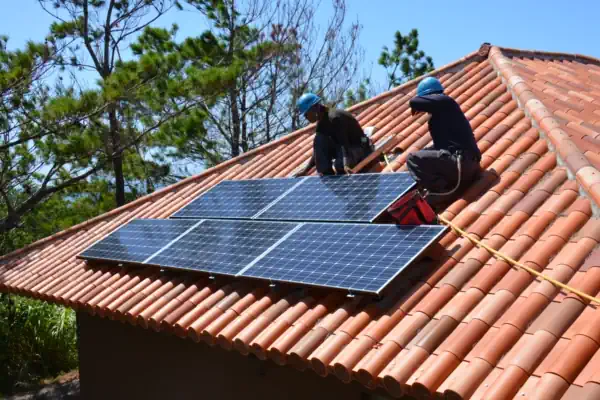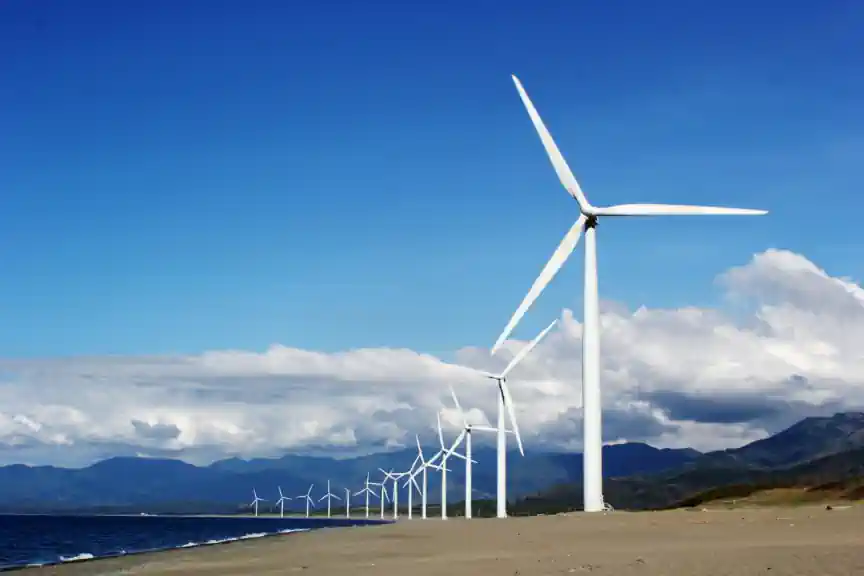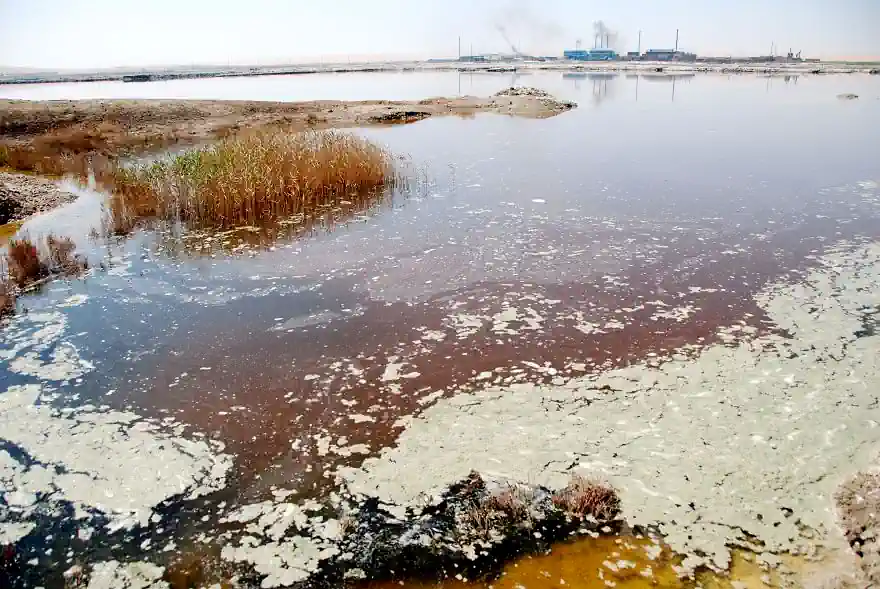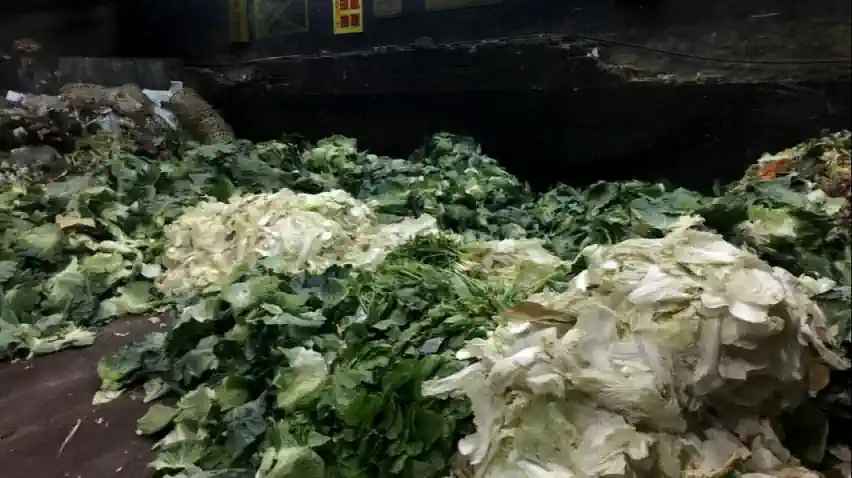ディジタル・デザイン
これはディジタル・デザインの講座で僕がしてる仕事を共有するページです。
Sustainable Theme
A sustainable theme is a goal to further the wellbeing of our planet and the people living on it. Many non-profit organizations will design their branding after the sustainable theme that they are working towards.
For my sustainable theme, I have chosen
Responsible Consumption and Production
This theme is meaningful to me because most of the power over what happens to our planet is held by a few megacorporations. Individual actions such as saving water are unlikely to make a difference when large factories dump gallons of waste into the ocean simply because it is the cheapest way to dispose of it. The only way to truly make a difference is to hold these companies accountable, and reform the economic system that led to all this waste in the first place.

We should support the solar industry so we can have access to clean energy.
Photo: Anna Ikarashi, OIST
Using a variety of clean energy sources will help us move away from fossil fuels.
Photo: Kervin Edward Lara
The chemicals used in the textile industry are released without being properly treated.
Photo: Bert van DijkInterviews
In order to best design a visual identity for this theme, I must first interview as many people as I can to get different perspectives on this theme. This is part of the Empathize step of Design Thinking. This is what I said to the interviewees:
For our Digital Design course, the Professor told us to choose a "sustainable theme" that is meaningful to us. Some examples of sustainable themes include "no poverty", "zero hunger" and "clean water". We will then create a visual identity based around the theme we have chosen, starting with a logo for a fictional non-profit organization that is devoted to that goal.
The theme I chose is "Responsible Consumption and Production". This theme is about identifying places in the industry where waste occurs, and correcting them.
The United Nations' website has this to say about this sustainable development goal:"Worldwide consumption and production — a driving force of the global economy — rest on the use of the natural environment and resources in a way that continues to have destructive impacts on the planet.Collecting feedback from others is an important part of the design process, so that I may understand the sustainable theme not just the way I see it, but the way others see it as well, and create a design that is understandable to everyone. My first question to you is this: what are your thoughts on this theme?
Economic and social progress over the last century has been accompanied by environmental degradation that is endangering the very systems on which our future development — indeed, our very survival — depends.
Sustainable consumption and production is about doing more and better with less. It is also about decoupling economic growth from environmental degradation, increasing resource efficiency and promoting sustainable lifestyles."
My second question is: what images come to mind when you think of this theme? (I will use your feedback when I design the logo)
Here is how each of the interviewees responded
Diane
It's an extremely important lofty, worthwhile theme certainly because it's about, you know, the sustainability of our planet. And having a planet that will be around for future generations to come. Some specific examples I thought of but I'm sure there's many, many examples are the Brazilian rainforests that are being depleted and not being... and the Brazilian rainforest is very important to the earth as a whole, not just to Brazil and it's being depleted in the name of profit. Fish stocks are being depleted all over the world people looking at, you know, short-term goals without thinking about keeping the fish stocks sustainable and I had a third one, but I can't remember... There's also, I guess just thinking about how clothes can be made very inexpensively. But now it's created a bit of a problem where it's still a lot of raw materials, go into the production of clothes, but then they get thrown out as well as opposed to many, many years ago when people would pay a lot more money for clothes and make them last longer. So we've become very much a throwaway society, where things are produced cheaply and then just thrown away and then replaced with something else as opposed to building products that will last and can be repaired over time. Those are my thoughts.
Me: Okay. Yeah, second question. I came up with because you know, I said that I think the first assignment is to design a logo, are there any images that come to mind when you think of the theme?
I said lofty, Brazilian rainforest, fish stocks but those might be bit too specific for a logo because it's a very broad topic. Something to do with maybe the planet earth and having it, you know, sustained over time and thriving and people continuing to thrive on the planet earth. Yeah, those are my thoughts.
Les
So my thoughts on sustainability, right? That's what I need to answer and...
Me: just any thoughts you have.
Yeah, any thoughts... you know very important or right there as and, and I don't think I need to get into all of the different examples. I think you have a lot of good examples already of where we can improve as a species and help the planet and help ourselves at the same time. I think that's an important thought is that people need to understand that what they do to help the planet, to do things in a sustainable way, is what helps human race at the same time. Maybe not in the short term for somebody who just wants profit just wants to be rich, but as a species, it's very important to think of sustainability and to think of the future, think of what we can do to use less to do more with what we already have. And you know, not all be greedy and expect to have more and more. I think that's an important thought there. So yeah, I wish for sustainability. I wish for all humans to think about it and to try to do even little things in their everyday life to help. Sometimes it just means doing less like traveling less. So there's less fuel being burned, or if they're really rich people, do you really need so many homes? Maybe you can settle for just having one nice home instead of homes all over the planet. Just, yeah, just consuming less I think is a big part of it but also you have to look at the big things like the production and industry and how industry works and how they're incentivized to just, you know, produce more and maybe they need to be incentivized to produce better or things that last longer like Diane mentioned. So that's my thoughts, sustainability. And in terms of the second question and what applies to a logo, one thing that came to mind are circles, things that come back, right? Yes, sort of like...
Me: Lots of logos have circles.
You gotta have. I mean, recycling. Logos are often, you know, go hand in hand with sustainability, so they tend to be circular type things. And if you're using, if you have a faucet, pouring water, you want to see it kind of coming back and coming back to the surface, you know, it's not just going to waste, but it's hard. It's hard to encapsulate all the different ways you can do sustainability in one logo, but if you I think if you capture the idea of things that are circular, things that are reused or the stuff that you know, we see again that would be I think kind of where my thoughts would be design wise, can't think of anything specific for you though.
Paul
So the question is what are my thoughts on a theoretical non-profit renewable energy or renewable resources company? That was what I thought was in general.
Well, when it comes to the idea of starting a non-profit for renewable resources, I agree. And the thought of the world leading towards current renewable resources instead of non-renewable ones, I agree. As a child, just like learning that one day all oil would be gone and we'd have nothing to power our gas cars, It was just common sense to me, to anyone, to be like, well, we better start working on the alternative solutions. People don't like to worry about that. They don't want to worry about the future, they like to worry about the now. That's the whole point, renewable, the goal should be, we should be able to use what we have ad infinitum, we should be able to start laying the foundations today. Build to use these resources indefinitely for generations, and not just, I mean helium is going to be gone in 30 years, I'm pretty sure. No more helium, think about that.
Me: No more balloons?
No more balloons. Make a balloon logo
Me: *chuckle*
and how it's deflating, or alternatively, for the logo, I guess, well, to wrap up my thoughts in the first one, just, yeah. It's just common sense to me, I see almost no point in argument because how can you not think renewable resources are important when it's just, it's a finite amount of non-renewable. It's going down. It's not, it's never going to go up again. So yeah, renewable is very important. How could it not be? as for the logo, a balloon deflating, or re-inflating. I don't know if you want to send a positive or negative message for the logo.
Me: Probably be more positive.
Yeah, alternatively, infinity symbol, for infinite resource.
Me: Unfortunately, the UN already used that one.
Oh dip.
Diane: the infinity symbol?
Me: Yeah, so, the professor, for some inspiration for sustainable things we could choose, we didn't have to choose them from this source, but the professor linked us to the United Nations page on sustainable development goals and they had a little, a short little logo for each of them. And the one for this theme was an infinity symbol going in an arrow.
All right.
Diane: it was Paul's idea.
Then a remix of the infinity symbol. Do the, I forget what it was called but the infinite staircase, you know what it's called, that one. It's basically just like an optical illusion that has just like a guy going on a square shape of stairs forever. Pretty much. Yeah, let me see if I can find that. This is still part of the interview keep recording. Oh yeah, the Penrose stairs, is what they're called. The illusion, Yeah, So it just keeps going up and up and up forever. These are the Penrose stairs.

Diane: Yep, that's cool.
Me: Yeah, that's a really good idea. Yeah, because it's like humanity. With renewable resources, we'll be able to keep going up forever.
Keep climbing forever
Diane: Never never never run out of stairs.
So, yeah, yeah, those are my thoughts, just common sense. Just, just do it, in the words of Shia LaBeouf, just do it. Just make the switch now before. Well, you know, I don't know if there will be a too late. There will just be a time where It's like, okay, chop chop, we're outta time. Let's go right now.
Brian
次:ロゴ・デザインIt makes me think more about the specific ways companies abuse our ecosystems as opposed to something more general like climate change. I think about overfarming, overfishing. Unsustainable land use to provide food just for farm animals. Burning the rainforest for that land. Relying on daily use products that have petrochemicals that require toxic mining and refining. I think of countries that feel like they’ve missed out or are behind in industrialization acting without sustainability in mind, and the role of world economic leaders like the US to incentivise them towards sustainability. A non-profit could take a part in providing those incentives.
I tend to jump to thinking of the bad images that are a direct result of unsustainable growth: forests burning, gas and oil plants with smokestacks, dead coral reefs, fish in large fishing nets, pipes dumping waste into water systems, people working in mines, factory farms. Thinking more positively… most of those can be contrasted to an image of something beautiful we’d like to preserve: forests, coral reefs, fish swimming freely, clean lakes, sustainable farms.


